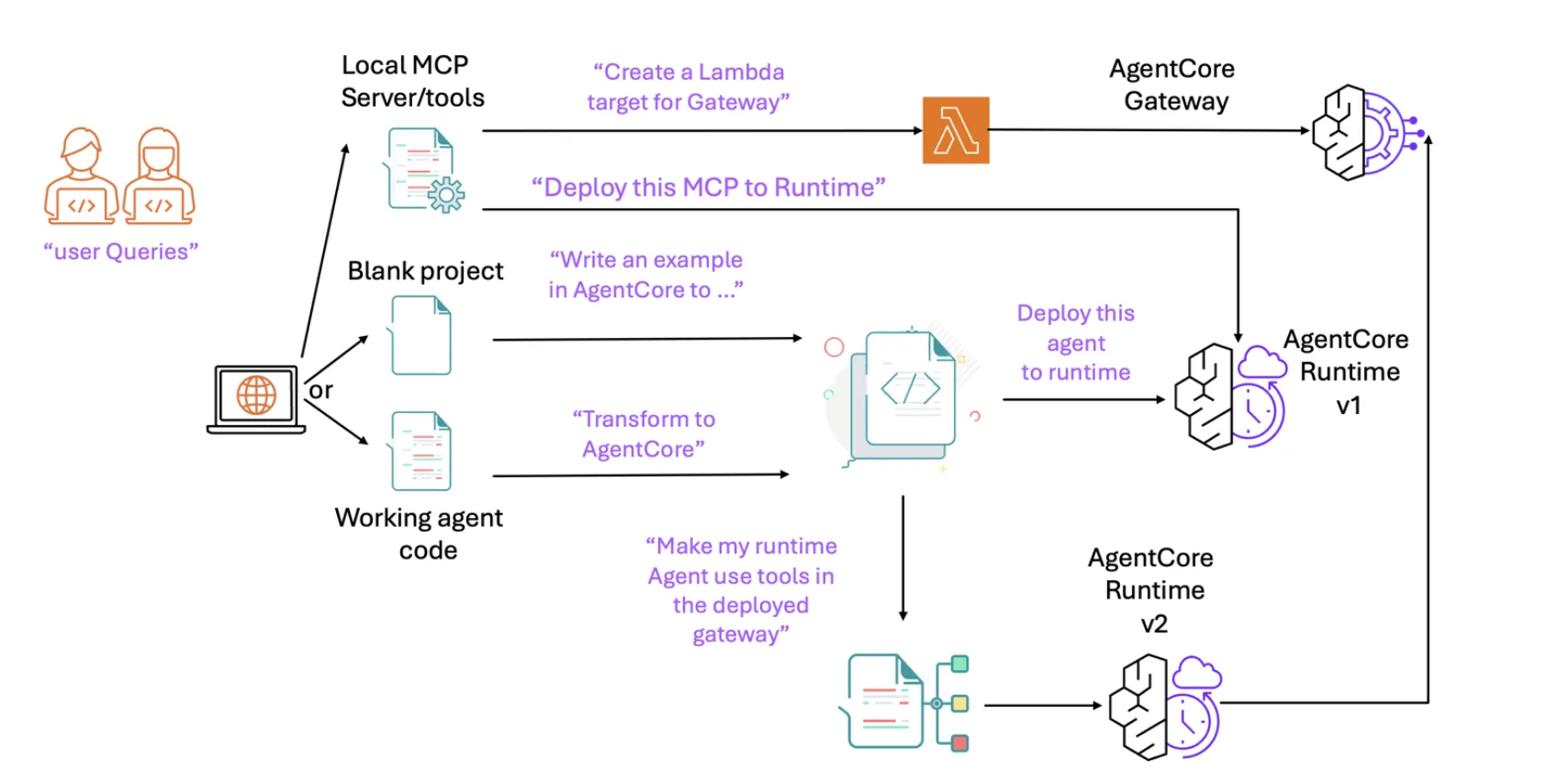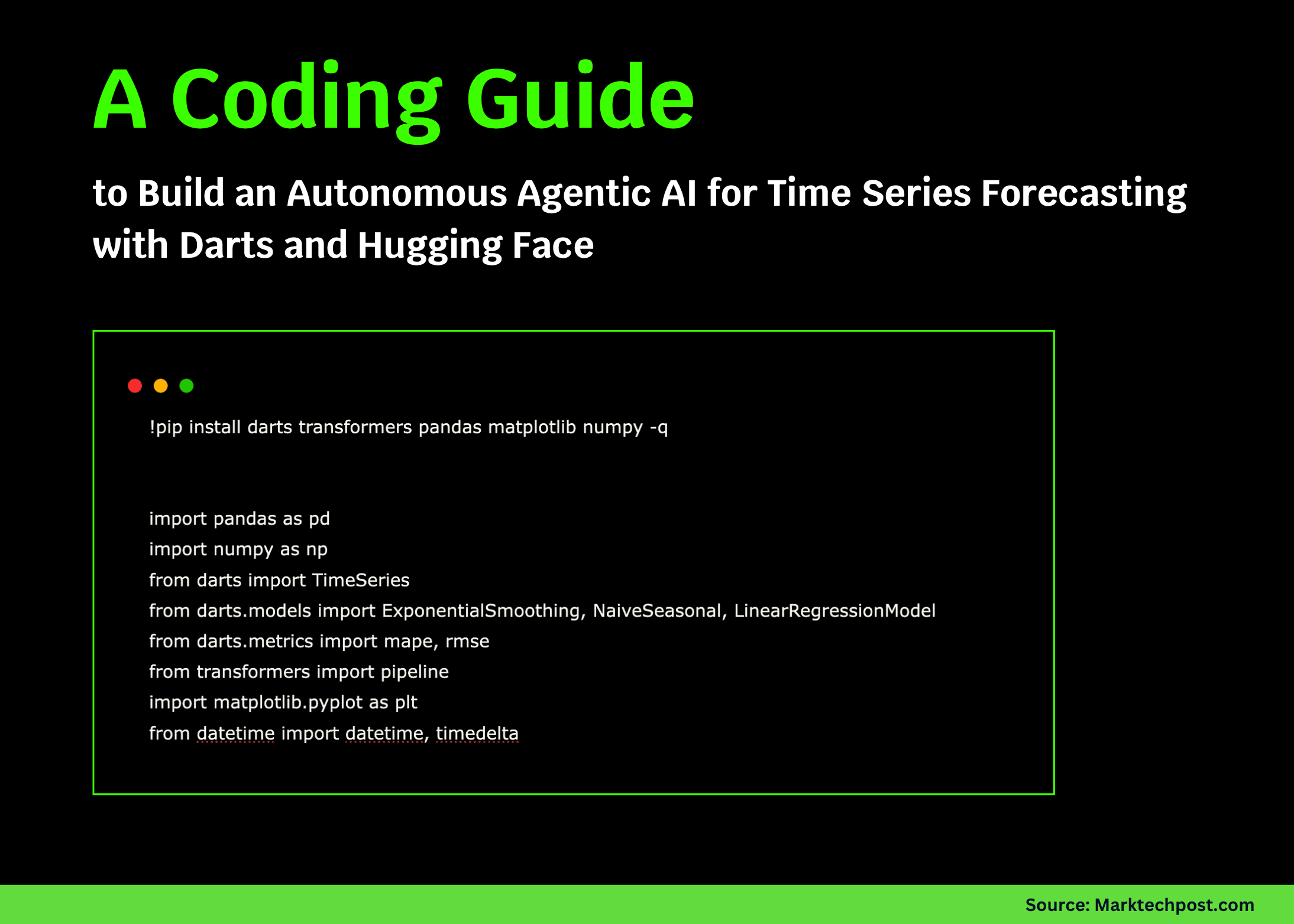
AWS released an open-source Model Context Protocol (MCP) server for Amazon Bedrock AgentCore, providing a direct path from natural-language prompts in agentic IDEs to deployable agents on AgentCore Runtime. The package ships with automated transformations, environment provisioning, and Gateway/tooling hooks designed to compress typical multi-step integration work into conversational commands.
So, what exactly is it?
The “AgentCore MCP server” exposes task-specific tools to a client (e.g., Kiro, Claude Code, Cursor, Amazon Q Developer CLI, or the VS Code Q plugin) and guides the assistant to: (1) minimally refactor an existing agent to the AgentCore Runtime model; (2) provision and configure the AWS environment (credentials, roles/permissions, ECR, config files); (3) wire up AgentCore Gateway for tool calls; and (4) invoke and test the deployed agent—all from the IDE’s chat surface.
Practically, the server teaches your coding assistant to convert entry points to AgentCore handlers, add bedrock_agentcore imports, generate requirements.txt, and rewrite direct agent calls into payload-based handlers compatible with Runtime. It can then call the AgentCore CLI to deploy and exercise the agent, including end-to-end calls through Gateway tools.

How to Install? and what’s the client support?
AWS provides a one-click install flow from the GitHub repository, using a lightweight launcher (uvx) and a standard mcp.json entry that most MCP-capable clients consume. The AWS team lists the expected mcp.json locations for Kiro (.kiro/settings/mcp.json), Cursor (.cursor/mcp.json), Amazon Q CLI (~/.aws/amazonq/mcp.json), and Claude Code (~/.claude/mcp.json).
The repository sits in the awslabs “mcp” mono-repo (license Apache-2.0). While the AgentCore server directory hosts the implementation, the root repo also links to broader AWS MCP resources and documentation.
Architecture guidance and the “layered” context model
AWS recommends a layered approach to give the IDE’s assistant progressively richer context: start with the agentic client, then add the AWS Documentation MCP Server, layer in framework documentation (e.g., Strands Agents, LangGraph), include the AgentCore and agent-framework SDK docs, and finally steer recurrent workflows via per-IDE “steering files.” This arrangement reduces retrieval misses and helps the assistant plan the end-to-end transform/deploy/test loop without manual context switching.
Development workflow (typical path)
- Bootstrap: Use local tools or MCP servers. Either provision a Lambda target for AgentCore Gateway or deploy the server directly to AgentCore Runtime.
- Author/Refactor: Start from Strands Agents or LangGraph code. The server instructs the assistant to convert handlers, imports, and dependencies for Runtime compatibility.
- Deploy: The assistant looks up relevant docs and invokes the AgentCore CLI to deploy.
- Test & Iterate: Invoke the agent via natural language; if tools are needed, integrate Gateway (MCP client inside the agent), redeploy (v2), and retest.
How does it make a difference?
Most “agent frameworks” still require developers to learn cloud-specific runtimes, credentials, role policies, registries, and deployment CLIs before any useful iteration. AWS’s MCP server shifts that work into the IDE assistant and narrows the “prompt-to-production” gap. Since it’s just another MCP server, it composes with existing doc servers (AWS service docs, Strands, LangGraph) and can ride improvements in MCP-aware clients, making it a low-friction entry point for teams standardizing on Bedrock AgentCore.
I like that AWS shipped a real MCP endpoint for AgentCore that my IDE can call directly. The uvx-based mcp.json config makes client hookup trivial (Cursor, Claude Code, Kiro, Amazon Q CLI), and the server’s tooling maps cleanly onto the AgentCore Runtime/Gateway/Memory stack while preserving existing Strands/LangGraph code paths. Practically, this collapses the prompt→refactor→deploy→test loop into a reproducible, scriptable workflow rather than bespoke glue code.
Check out the GitHub Repo and Technical details. Feel free to check out our GitHub Page for Tutorials, Codes and Notebooks. Also, feel free to follow us on Twitter and don’t forget to join our 100k+ ML SubReddit and Subscribe to our Newsletter. Wait! are you on telegram? now you can join us on telegram as well.
Asif Razzaq is the CEO of Marktechpost Media Inc.. As a visionary entrepreneur and engineer, Asif is committed to harnessing the potential of Artificial Intelligence for social good. His most recent endeavor is the launch of an Artificial Intelligence Media Platform, Marktechpost, which stands out for its in-depth coverage of machine learning and deep learning news that is both technically sound and easily understandable by a wide audience. The platform boasts of over 2 million monthly views, illustrating its popularity among audiences.






